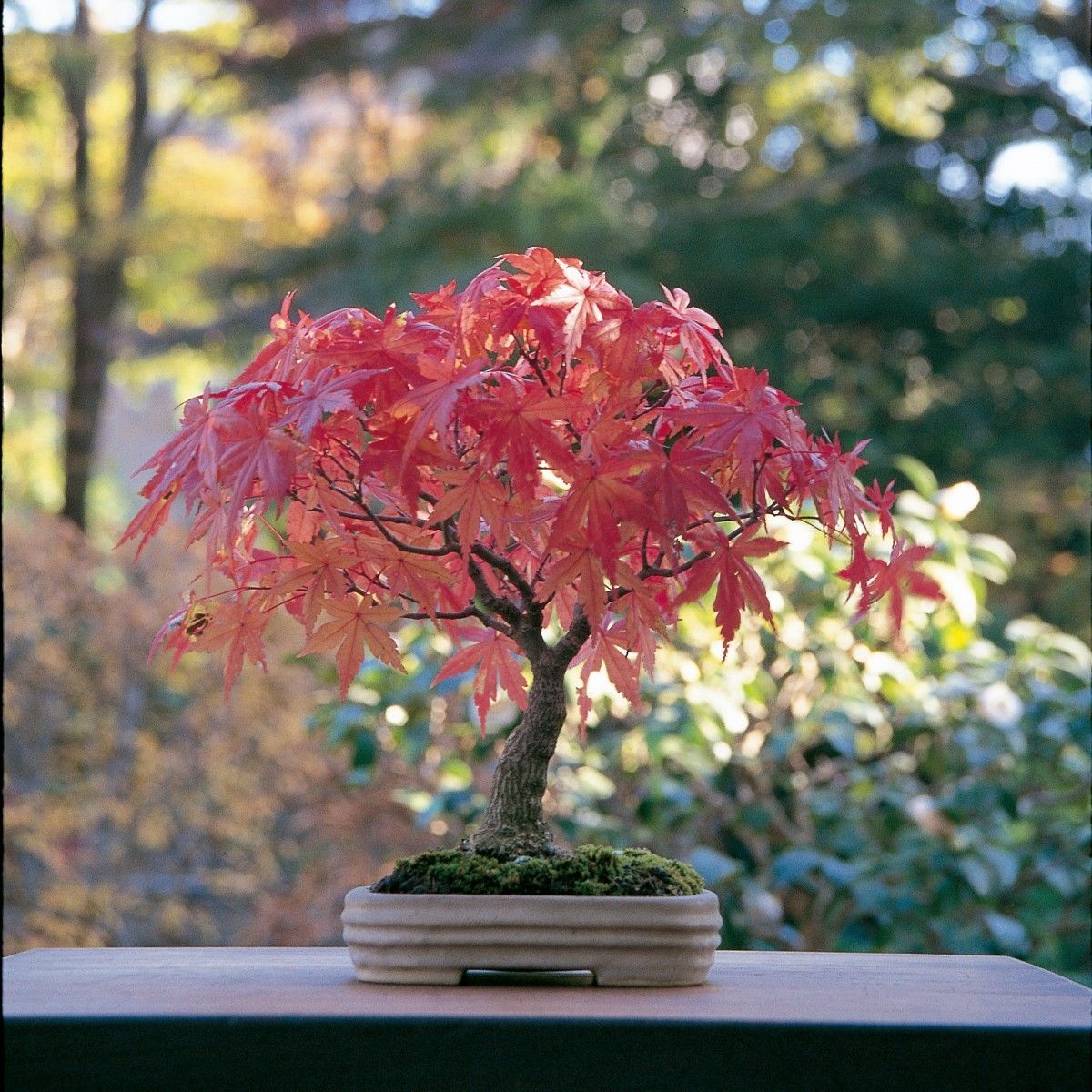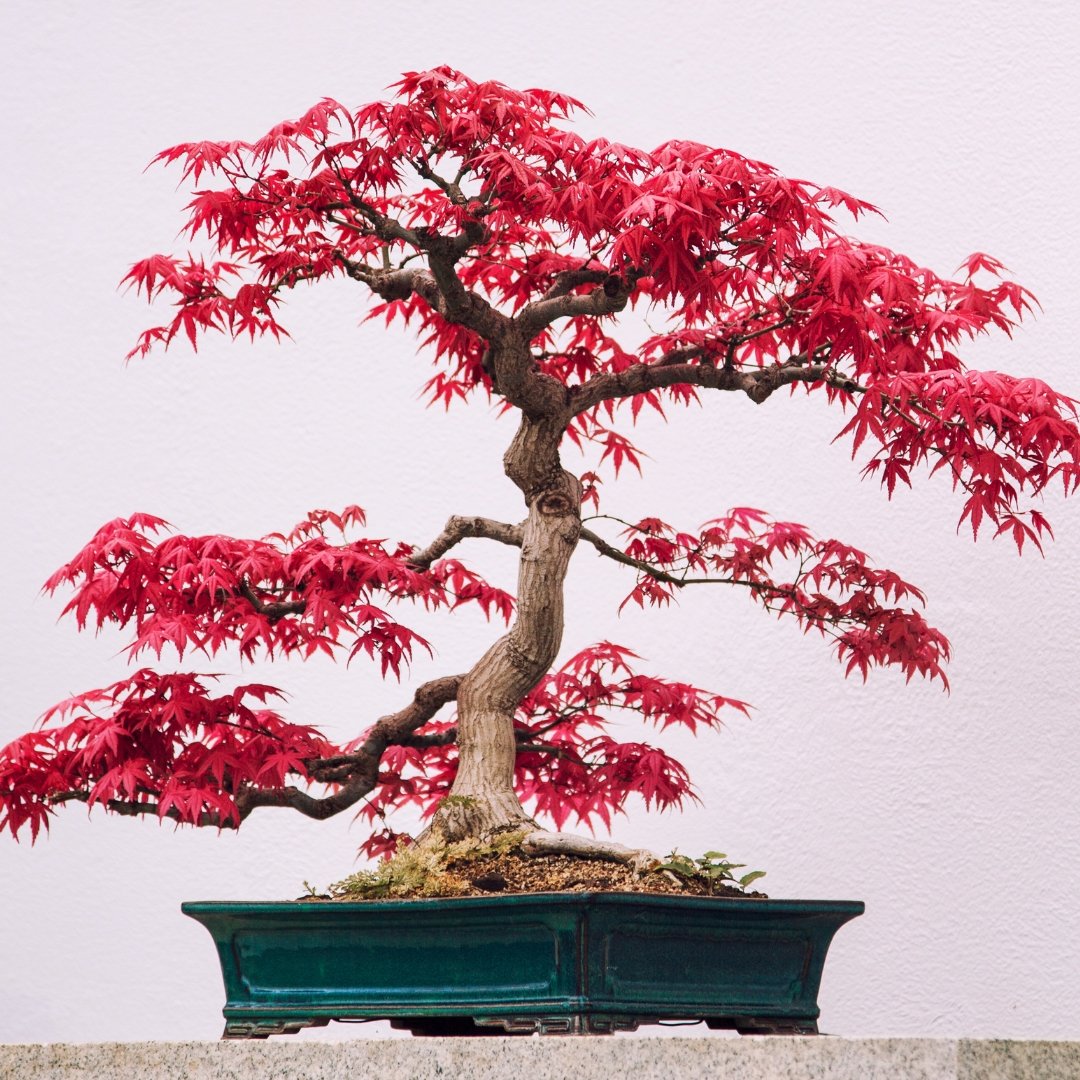The Art of Miniature Majesty: Cultivating Japanese Maple Bonsai
The Japanese Maple, or Acer palmatum, is a botanical masterpiece that has captivated gardeners and artists for centuries. Its delicate, palmate leaves, vibrant seasonal color changes, and graceful branching patterns make it an ideal subject for the ancient art of bonsai. Transforming a full-sized tree into a miniature representation of nature’s grandeur requires patience, skill, and a deep appreciation for the plant‘s inherent beauty. This article delves into the intricate world of Japanese Maple bonsai, exploring its cultivation, styling, and the profound connection it fosters between the grower and the natural world.
A Symphony of Seasonal Color
The most striking feature of the Japanese Maple is its breathtaking array of colors. From the vibrant spring flush of fresh green or red leaves to the fiery autumnal display of crimson, orange, and gold, these trees offer a constantly evolving visual spectacle. This dynamic color palette makes them a favorite among bonsai enthusiasts, providing a living canvas that changes with the seasons.
Delicate Leaf Structure and Branching

The small, intricately lobed leaves of the Acer palmatum are perfectly suited for bonsai. Their delicate texture and graceful silhouette create a sense of refined elegance, even in miniature form. The tree’s natural tendency to develop fine ramification, or branching, makes it amenable to shaping and styling, allowing the artist to create intricate and visually compelling compositions.
Varieties and Cultivars
The Acer palmatum family encompasses a vast array of cultivars, each with its unique characteristics. From the classic ‘Deshojo’ with its vibrant spring red to the weeping ‘Dissectum’ with its finely divided leaves, there’s a Japanese Maple to suit every taste and style. This diversity allows bonsai enthusiasts to explore different forms and create a truly personalized collection.
Choosing the Right Material
The journey begins with selecting a healthy and promising specimen. Whether starting from a seedling, a cutting, or a nursery-grown tree, look for a trunk with good taper, well-developed roots, and a branching structure that lends itself to bonsai styling. Avoid trees with significant trunk damage or root rot.
Soil and Repotting
:max_bytes(150000):strip_icc()/growing-japanese-maple-bonsai-5085314_02-d3f41f2a659e4d1ba5d1eb2b53978277.jpg)
Japanese Maple bonsai thrive in well-draining soil that retains moisture. A blend of akadama, pumice, and lava rock is commonly used, providing the necessary aeration and drainage. Repotting is essential for maintaining root health and controlling growth. Young trees may need repotting every year, while older trees can be repotted every two to three years. Spring is the ideal time for repotting, just before the new growth emerges.
Watering and Fertilizing
Consistent watering is crucial, especially during the active growing season. The soil should be allowed to slightly dry between waterings, but never completely dry out. Overwatering can lead to root rot, while underwatering can cause leaf scorch and dieback. Fertilizing is essential for promoting healthy growth and vibrant color. Use a balanced fertilizer during the growing season, and reduce or eliminate fertilization during the dormant period.
Sunlight and Temperature
Japanese Maples prefer a location with full sun in the morning and partial shade in the afternoon, especially in hot climates. They are deciduous trees and require a period of dormancy during the winter. Protect them from frost and freezing temperatures, but avoid keeping them in a heated environment, as this can disrupt their natural dormancy cycle.
Pruning and Pinching

Pruning is essential for shaping the tree and maintaining its miniature form. Structural pruning, which involves removing branches to create the desired silhouette, is typically done during the dormant season. Pinching, which involves removing new growth tips, is done throughout the growing season to control growth and encourage ramification.
Wiring and Shaping
Wiring is a technique used to bend and shape branches, creating movement and defining the tree’s overall form. Copper or aluminum wire is carefully wrapped around the branches and gently bent to the desired position. Wiring should be monitored closely and removed before it begins to cut into the bark.
Defoliation
Defoliation, the removal of leaves, is a technique used to reduce leaf size and promote ramification. It is typically done in mid-summer, after the first flush of growth has hardened off. Defoliation should only be performed on healthy trees and should not be done every year.
Creating Deadwood (Jin and Shari)
Jin and shari are techniques used to create the appearance of aged and weathered wood. Jin involves stripping the bark from dead branches, while shari involves stripping the bark from portions of the trunk. These techniques add character and visual interest to the bonsai, creating a sense of history and resilience.
Formal Upright (Chokkan)
The formal upright style is characterized by a straight, upright trunk, a symmetrical branching pattern, and a triangular silhouette. It is a classic and elegant style that showcases the tree’s natural beauty.
Informal Upright (Moyogi)
The informal upright style is similar to the formal upright, but with a more natural and relaxed appearance. The trunk may have gentle curves and bends, and the branching pattern is less symmetrical.
Slanting (Shakan)
The slanting style depicts a tree that has been exposed to strong winds or other environmental forces. The trunk grows at an angle, creating a sense of movement and drama.
Cascade (Kengai)
The cascade style depicts a tree that grows over a cliff or other steep incline. The trunk and branches cascade downward, creating a dramatic and visually striking composition.
Semi-Cascade (Han-Kengai)
The semi-cascade style is a variation of the cascade style, where the trunk and branches extend below the rim of the pot but do not reach the bottom.
Broom (Hokidachi)
The broom style depicts a tree with a straight trunk and numerous fine branches that radiate outward, creating a broom-like silhouette. This style is often used for deciduous trees with fine ramification.
Literati (Bunjin)
The literati style is characterized by a slender, elegant trunk, sparse foliage, and a sense of refined simplicity. It evokes the spirit of Chinese scholar-artists, who valued simplicity and naturalness.
Connecting with Nature
Bonsai is more than just a horticultural practice; it is a way to connect with nature on a deeper level. The act of cultivating and shaping a tree fosters a sense of patience, observation, and appreciation for the natural world.
Cultivating Mindfulness
The meticulous care required for bonsai cultivates mindfulness and attention to detail. The process of pruning, wiring, and watering encourages the grower to slow down and appreciate the present moment.
Expressing Creativity
Bonsai is a form of artistic expression. The grower is the artist, and the tree is the canvas. Through careful shaping and styling, the grower can create a unique and personal representation of nature.
Passing Down a Legacy
A well-maintained bonsai can live for centuries, becoming a living legacy that is passed down through generations. The act of caring for a bonsai connects the grower to the past and future, creating a sense of continuity and connection.
In conclusion, the cultivation of Japanese Maple bonsai is a rewarding and enriching experience. It requires patience, skill, and a deep appreciation for the natural world. By embracing the art of miniature majesty, you can create a living masterpiece that brings beauty, tranquility, and a profound connection to nature into your life.


